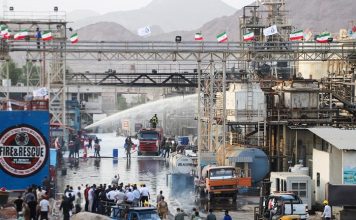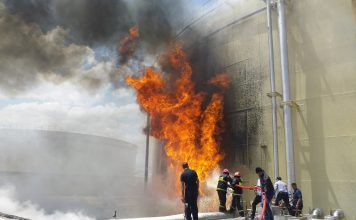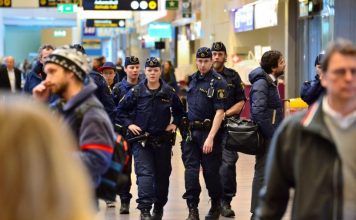DUBAI, Oct 11 (Reuters) – Clashes between protesters and security forces continued across Iran on Tuesday, with social media videos showing tanks being transported to Kurdish areas which have been the focal point of a crackdown on protests over Mahsa Amini’s death in custody.
Protests calling for the fall of the clerical establishment have swept Iran since Amini, a 22-year-old Iranian Kurdish woman, died on Sept. 16 while being held by police for “inappropriate attire”.
Facing the boldest challenge to the Islamic Republic since the 1979 revolution, the authorities have used force to suppress the biggest wave of dissent since 2019.
Watch the awe-inspiring bravery of people of Sanandaj. Their city has been subjected to shelling by the regime since yesterday, but they went outside to dance, men and women.
Dancing is also forbidden in Iran. #MahsaAmini
pic.twitter.com/a7xf7aEJPy— Masih Alinejad ?️ (@AlinejadMasih) October 10, 2022
Sanandaj in Kurdistan Province fights with Islamic Republic repression agents, shooting people with weapons day and night.
The following are bullet shells from last night.#مهسا_امینی #MahsaAmini #IranRevolution pic.twitter.com/9ioMmCOvV3— 1500tasvir_en (@1500tasvir_en) October 11, 2022
At least 185 people, including 19 minors, have been killed, hundreds injured and thousands have been arrested by security forces, according to rights groups. The Iranian government says more than 20 security forces have been killed.
Iranian authorities have said they will investigate civilian deaths.
Unrest continued late on Monday and overnight after demonstrations spread into the country’s vital energy sector, according to videos on social media which Reuters could not confirm.
Energy installations in southwestern Iran were hit by strikes for a second day on Tuesday, with workers protesting at the Abadan oil refinery, Kangan and the Bushehr petrochemical plant, according to the widely followed Tavsir1500 Twitter account.
Videos posted on the account showed a few dozen workers chanting “Death to the dictator”, referring to Supreme Leader Ayatollah Ali Khamenei.
The Abadan refinery workers began their strike today, Tuesday.#مهسا_امینی #MahsaAmini #IranRevolution pic.twitter.com/ULQLEeVw7C
— 1500tasvir_en (@1500tasvir_en) October 11, 2022
A regional official said on Tuesday that the workers at the Assaluye plant were angered by a dispute over wages and were not protesting over Amini’s death.
Governor Ali Hashemi said some Iranians tried to hijack the workers’ protests by chanting anti-government slogans, according to Iran’s Young Journalists Club News (YJC) telegram account.
France’s foreign minister said on Tuesday five of its nationals were being held in Iran and the European Union had agreed the technical aspects to impose sanctions on Tehran, which would come into force next week.
France lashed out at Iran on Oct. 6 accusing it of “dictatorial practices” and taking its citizens hostage after a video was aired in which a French couple appeared to confess to spying.
Five French Nationals Are Currently Held in Iran – Minister Colonna
Revolutionaries in Shiraz tear down Soleimani banner.#Mahsa_Amini #IranRevolution2022 #مهسا_امینی pic.twitter.com/t5r9exT2sE
— Alireza Nader علیرضا نادر (@AlirezaNader) October 10, 2022
ANGER IN KURDISH REGIONS
Tensions have been especially high in Kurdish regions where Amini hailed from. Human rights groups say the Iran‘s Kurdish minority has long been oppressed – a charge the Islamic Republic denies.
The Hengaw human rights group said on Monday security forces fired towards residences in the Kurdish city of Sanandaj.
The Iranian authorities have blamed the violence on an array of enemies including armed Iranian Kurdish dissidents, with the Revolutionary Guards attacking their bases in neighbouring Iraq a number of times during the latest unrest.
According to a video posted by Tavsir1500 protesters set fire to the office on a prayer leader in the city of Fuladshahr in the central province of Isfahan.
University students have played a pivotal role in the protests with dozens of universities on strike.
A combination of mass protests and strikes by oil workers and Bazaar merchants helped to sweep the clergy to power in the Iranian revolution four decades ago.
Dua Lipa Pleads With Fans Not to ‘Turn Away’ From Iran Protests
(Reporting by John Irish in Paris and Dubai newsroom: Writing by Michael Georgy; Editing by Raissa Kasolowsky)









